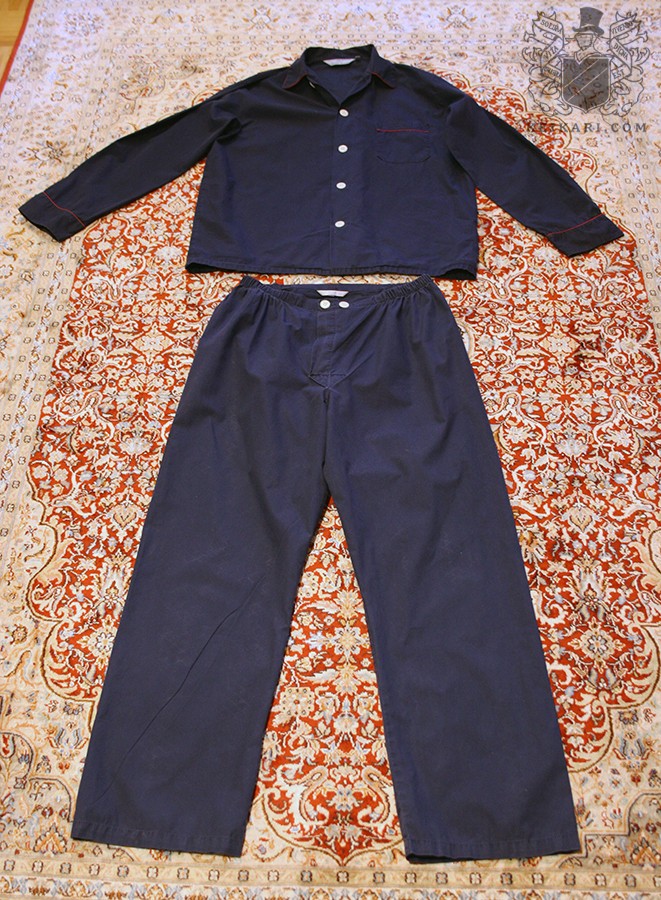A history of pyjamas
0January 19, 2016 by Ville Raivio
Pyjamas were originally loose, thin trousers that staid up with the help of a thin cord. Men and women shrouded themselves with these in India, Iran, Pakistan and Bangladesh. The trousers were usually paired with a knee-length tunic, the likes of which are worn as part of the shalwar kameez of today. The pyjama name comes from the Hindi word pair pae jama or pai jama, which mean leg clothing. The common use of pyjamas in Western countries began in the 1900s, but their history dates back to the influences of the British Empire and all the way to the 1600s. Europeans traversed to far-flung countries took them upon themselves as leisure wear, better suited to the climate of Eastern places than the woven woollens of the North.
Products from Pukimo Raivio
Ralph Lauren, Black Label suit, size 52EU
Those returning to mother countries brought pyjamas with them during the 1870s at the least, as these were quite rare markers of status and globe trotting in Europe. Pyjamas made up of a shirt with trousers also covered lewdly hairy lower limbs more effectively than the previously popular long nightshirt. This garment, today so comically-looking, did hold back the tide of pyjamas until the 1920s as it was considered warmer in poorly insulated houses. Before the 20th century, at the last, the word pyjamas meant a set of nightwear, both the shirt and trousers. The exotic aura of pyjamas was quickly snuffed out as clothing factories smelled a moneyd novelty, and began making them in great numbers and marketed the garments as modern apparel.
In the 1910s, French fashion houses manufactured pyjamas for daywear as well as sleeping, and their extreme lightness influenced the make of other garments. In a peculiar league of their own were evening pyjamas worn by city madams for informal house suppers. The common cut of men and women’s clothes in the 1920s was narrow, almost genderless, and the era retained the favour of the Tens for pyjamas of many kinds. While men’s nightwear was usually made from cotton or flannel and undecorated, those for women were made from thin, smooth silks and viscose, dressed with lace and embroidery. The male pyjama was very colourful in the ’20s, perhaps to lighten the mood after the dark daywear. The materials and details of pyjamas varied for over half a century until the wild 1970s arrived. The manufacture of unisex pyjama models that began then has stayed with us.
The top of a classic men’s pyjama resembles a collared shirt, but its collar is often round and entirely soft, with cuffed sleeves. The body of the shirt often has a placket to frame the larger buttons. By far the most common cut is loose to make for comfortable sleeping, while a common touch is a contrasting, colourful piping. A breast pocket is the thing to add as most pyjamas have no other pockets. The original drawstring trouser waist is usually replaced with an elastic band. As for materials, woven cottons are durable and smooth on the skin, while plain jerseys stretch like no other, and both of these are defaults. While silks have been more common before, dry-cleaning them is a nuisance and the material wears hot and flimsy. Linen remains the coolest for summer, flannel the warmest for winter, and pyjamas can be varied endlessly with different materials and detailing. A more stylish garment for sleeping has not been invented yet, so pyjamas remain on man’s shoulders still.
Category Accessories | Tags:




Leave a Reply